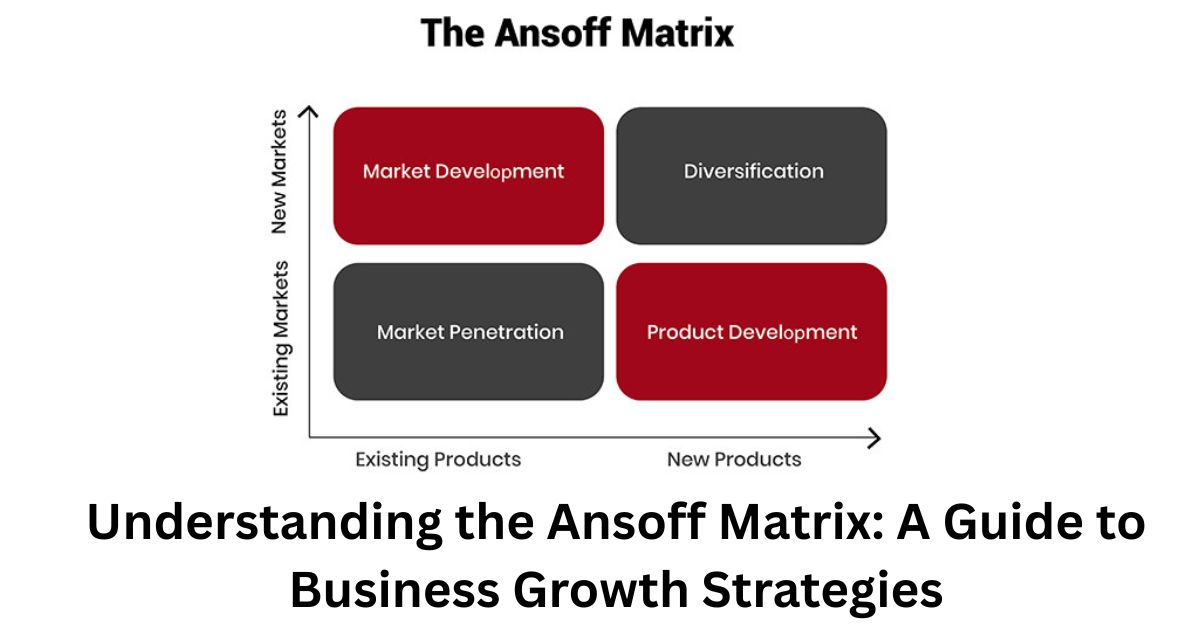
In the world of business, making the right decisions about growth can be challenging. Companies need effective tools to plan their expansion and minimize risks. One of the most popular and widely used tools for this purpose is the ansoff matrix. This strategic framework helps businesses analyze and plan growth opportunities by considering existing and new markets alongside existing and new products.
In this article, we will explore what the ansoff matrix is, how it works, the four key strategies it presents, and why it remains relevant for businesses today.
What is the Ansoff Matrix?
The ansoff matrix, also known as the Product-Market Expansion Grid, was developed by Igor Ansoff in 1957. It is a strategic planning tool used by companies to devise growth strategies by focusing on products and markets. The matrix provides four distinct growth options by combining current and new products with current and new markets.
By using the ansoff matrix, businesses can evaluate potential risks and rewards, prioritize their efforts, and develop a clear plan for expansion.
The Four Growth Strategies of the Ansoff Matrix
The ansoff matrix consists of four strategies: Market Penetration, Market Development, Product Development, and Diversification. Each strategy involves a different approach to growth and carries varying degrees of risk.
1. Market Penetration
This strategy focuses on increasing sales of existing products in existing markets. The goal is to gain a larger market share without changing the product or market. Companies may achieve this by improving marketing efforts, lowering prices, or enhancing customer service.
Market penetration is considered the least risky option because it relies on familiar products and markets. It is ideal for businesses looking to strengthen their position in a competitive environment.
2. Market Development
Market development involves taking existing products into new markets. This can include expanding geographically, targeting different customer segments, or exploring new sales channels.
This strategy carries more risk than market penetration because the company enters unfamiliar markets, which may have different customer preferences, regulations, or competitive dynamics.
3. Product Development
Product development means creating new products for existing markets. This can be achieved through innovation, adding new features, or launching complementary products.
This strategy is moderately risky since the company understands the market but introduces unfamiliar products. Success depends on how well the new products meet customer needs.
4. Diversification
Diversification involves offering new products in new markets. This is the riskiest strategy because the company ventures into completely unknown territory both in terms of products and markets.
Diversification can be related or unrelated. Related diversification leverages existing expertise, while unrelated diversification means entering entirely different industries.
Why is the Ansoff Matrix Important?
The ansoff matrix is a valuable tool for several reasons:
- Clear framework: It simplifies complex growth decisions into four manageable options.
- Risk assessment: The matrix highlights the varying risk levels associated with each strategy.
- Strategic focus: It helps companies allocate resources and set priorities effectively.
- Versatility: It can be applied by businesses of all sizes and industries.
By using the ansoff matrix, companies avoid haphazard growth attempts and develop well-thought-out strategies aligned with their goals.
How to Use the Ansoff Matrix in Your Business
Applying the ansoff matrix involves:
- Analyzing current products and markets: Understand where your company stands.
- Identifying growth opportunities: Look for ways to expand through the four strategies.
- Evaluating risks and benefits: Consider the potential rewards and challenges.
- Selecting the best strategy: Choose the option that fits your company’s goals and capabilities.
- Implementing the plan: Develop detailed actions to execute the chosen strategy.
Regularly revisiting the matrix helps businesses adapt to changing market conditions and stay competitive.
Real-Life Examples of Ansoff Matrix Strategies
- Market Penetration: A coffee shop increases its advertising and loyalty programs to attract more customers in its current city.
- Market Development: A smartphone manufacturer starts selling its existing models in emerging countries.
- Product Development: A car company launches electric vehicle models for its existing customers.
- Diversification: A food company starts producing cosmetic products targeting a new market segment.
Frequently Asked Questions (FAQs)
Q1: Who created the Ansoff Matrix?
The ansoff matrix was created by Igor Ansoff, a mathematician and business manager, in 1957.
Q2: Which strategy in the Ansoff Matrix carries the highest risk?
Diversification is the riskiest strategy because it involves new products in new markets.
Q3: Can a business use more than one Ansoff Matrix strategy at the same time?
Yes, businesses often combine strategies depending on their goals and market conditions.
Q4: Is the Ansoff Matrix suitable for small businesses?
Absolutely. The ansoff matrix is versatile and useful for businesses of all sizes.
Q5: How often should a company revisit its Ansoff Matrix strategy?
Companies should review their growth strategies regularly to stay aligned with market changes and company goals.
Conclusion
The ansoff matrix remains a powerful and practical tool for companies aiming to grow and expand systematically. By clearly categorizing growth strategies based on products and markets, it helps businesses evaluate risks and focus on the best opportunities.
Whether you are a startup exploring your first market or an established company planning international expansion, understanding and applying the ansoff matrix can guide you toward informed, strategic growth.
For More : https://inspireyourmindset.com/
